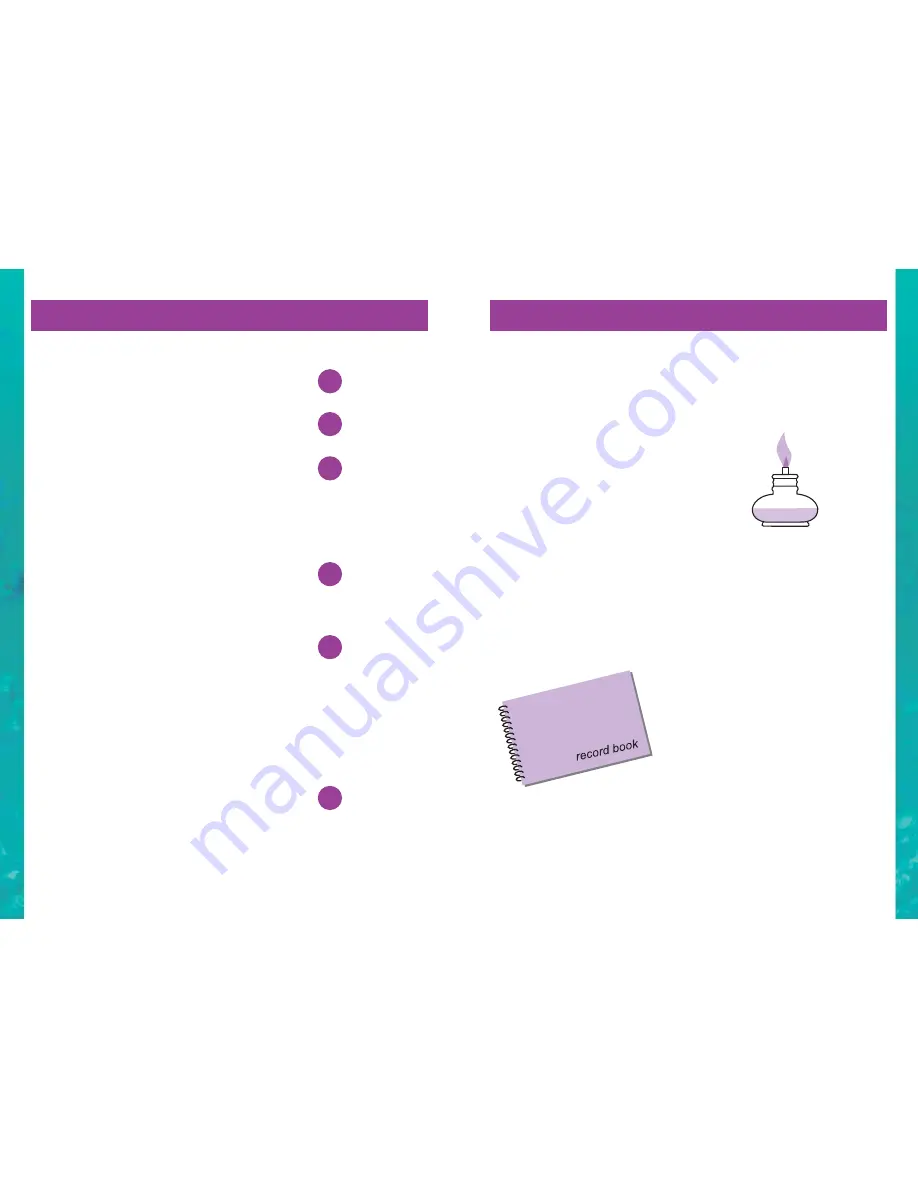
Setting up your Chemistry Laboratory
Working in your Chemistry Laboratory
8
9
Keep accurate records of your work. There is
little point in doing chemical experiments if
you don’t know what you have done, why
you did it and what happened. Follow the
instructions carefully and watch very closely
what happens, and then try to work out why
it happened. At the back of these instructions
are answers to what you should see and
conclude from your observations.
The Record Book
The best type of book to use is a hard
covered book or one with a spiral binder.
Write up each experiment with:
• when you did the experiment (the date)
• what the experiment was about (its title)
• what you did (the method)
• what happened (the results)
• why it happened (the conclusions).
Laboratory Techniques
Practical chemistry requires you to carry out
various tasks which will at first be unfamiliar
to you. This section contains some hints and
tips that will help you with these tasks.
Using The Spirit Burner
You must use the Spirit Burner with great
care. It should always be placed on a metal
tray that can catch any spillages - a biscuit
tin lid is ideal.
Fill the burner three quarters full with
Methylated Spirits, screw on the cap and
wait a few minutes for the Methylated Spirits
to soak up the wick. You need about 3mm of
wick protruding from the cap. Ensure that the
outside of the burner is dry. Keep the bottle
of Methylated Spirits well away from the
Spirit Burner. Light the burner with a match
(or preferably a disposable cigarette lighter).
You will see that the flame is nearly
colourless and in bright sunlight it may be
invisible. It is very easy to burn yourself and
to minimise this risk we recommend the
following tip.
Continued...
You need to set up your laboratory work
space in a well lit and ventilated room with, if
possible, a heat resistant surface to work on.
You will soon discover that an experimental
chemist spends a lot of time washing dirty
equipment so a close supply of running
water, or a large container to hold waste
water is essential.
For most people the kitchen is the best place
to set up your laboratory.
You also need a clean area nearby where you
can write in your laboratory notebook and
keep other items safe and dry. It is unlikely
that you will have a laboratory area that is
not to be used by other people at other
times. This is certainly so if you work in your
kitchen. You need, therefore, to be able to
easily pack away your Chemistry Laboratory.
You can, of course, use the box which we
have supplied, but you will quickly acquire
other equipment and chemicals, and we
strongly recommend that you get a large
strong cardboard or plastic box in which you
can conveniently pack and unpack
everything and store it away when not in use.
IT IS VERY IMPORTANT that you store this
set somewhere where young children do not
have access to it. Read and act upon all the
safety advice within this manual!
Have readily available at all times the
following 6 items.
A sink or container for liquid waste.
A waste bin for solid waste.
A piece of hardboard or thick
cardboard or similar (newspaper in an
emergency) to put on the work bench.
Then if you have any spills you can
easily clean up the mess.
A kitchen roll, or some cloths,
for keeping your laboratory area
clean and tidy.
Two tea-towels (not those usually used
in the kitchen). One dry tea-towel
should be used for drying your
apparatus after you have washed it.
The other tea-towel should be wet and
you should keep it handy so that you
can quickly smother a small fire if you
are unlucky enough to have one.
A biscuit tin lid, or something similar,
in which to stand your
Spirit Burner.
1
2
3
4
5
6






































